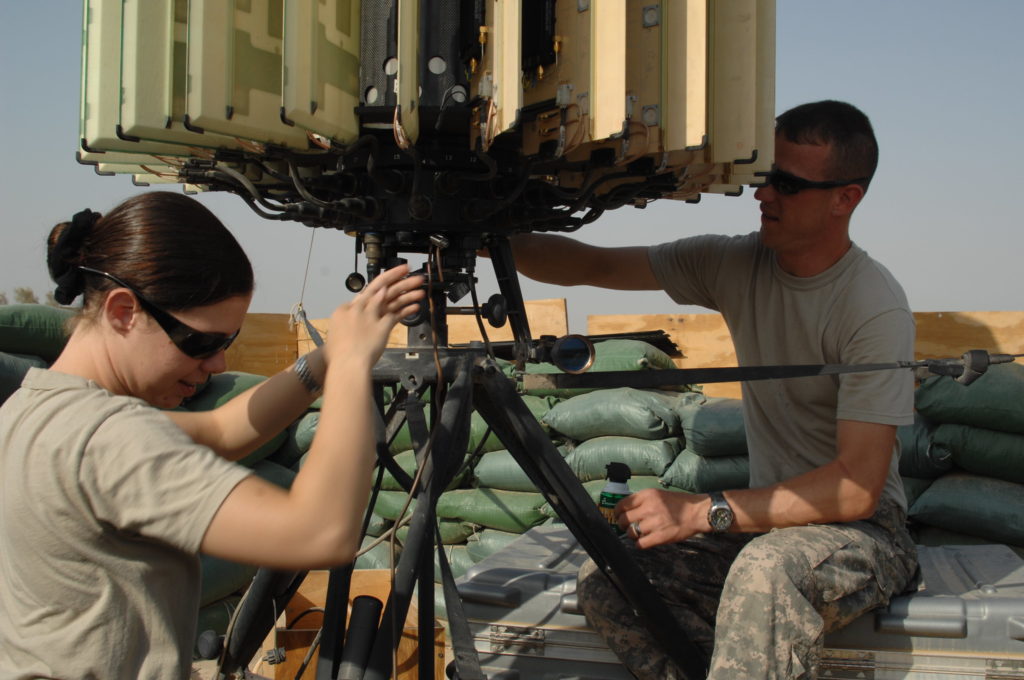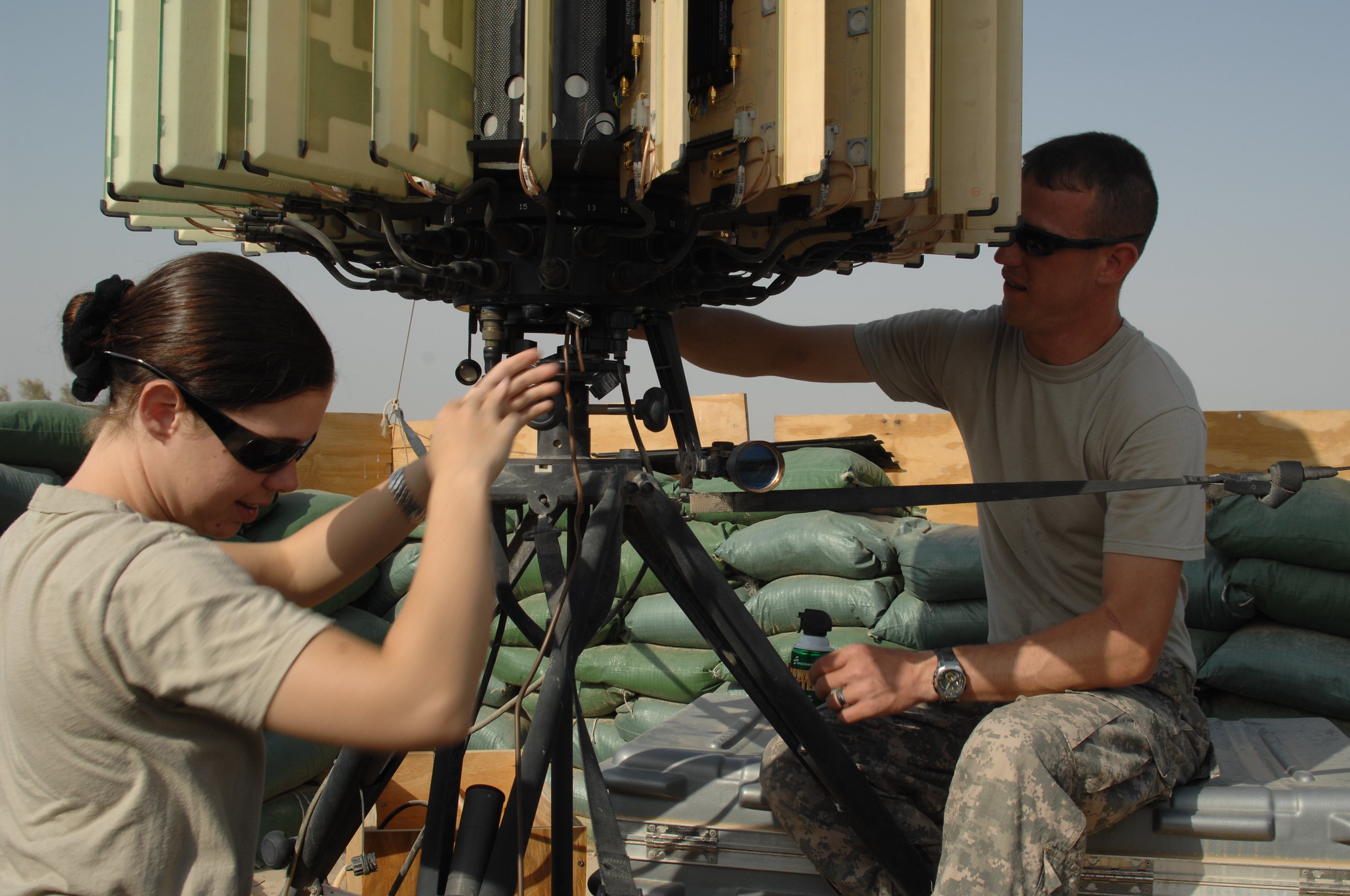

Topic Objective
Develop and demonstrate the capability to synthetically simulate infrared and radar signatures to trigger a threat or target response from the system under test for use in assessing automatic target detection, recognition, and identification in a fully immersive hardware-in-the-loop test environment.
Description
Aberdeen Test Center’s (ATC) Moving Target Simulator (MTS) is a hardware‐in‐the‐loop simulator used to assess the target acquisition and target tracking performance of combat vehicles and fire control systems. The MTS is a 100-foot radius dome structure whereby the interior of the dome doubles as a projection screen. Items being tested in the MTS are presented with visual and infrared targets on the projection screen which follow various predetermined target paths. System operators then attempt to acquire the target as quickly as possible and track it accurately throughout the target path. Legacy systems have primarily relied on the operator to identify and track targets. However, future systems will employ infrared and radar-based sensor technology to assist with or automatically detect, identify, track, and engage targets. The MTS requires the ability to simulate the infrared and radar signatures of these targets and thus trigger these sensors so that the system under test believes that a threat or target exists so the resultant response can be measured. The goal being that the threat stimulation capability remains independent of the system under test and built into the fully immersive visual test environment at ATC.
Phase I
Determine the technical feasibility of synthetically generating realistic targets that can be used to trigger infrared and radar-based automatic target/threat detection systems in a hardware-in-the-loop test environment.
Phase II
Produce a prototype and demonstrate the capability of generating synthetic targets in ATC’s Moving Target Simulator facility.
Phase III
Implement the capability into ATC’s Moving Target Simulator and continue to adapt and evolve the technology to keep pace with advances in automatic target detection systems. The ability to synthetically generate targets will provide ATC and the DoD with the technology leap necessary to assess automatic target/threat detection, recognition, and identification of manned and unmanned weapon systems in controlled hardware-in-the-loop test environments. This technology can be leveraged by private industry to test such things as self-driving cars, delivery robots, and any autonomous system that uses infrared and radar sensor technology for navigation and decision making.
Submission Information
To submit full proposal packages, and for more information, visit the DSIP Portal.

References:
Topic Objective
Develop and demonstrate the capability to synthetically simulate infrared and radar signatures to trigger a threat or target response from the system under test for use in assessing automatic target detection, recognition, and identification in a fully immersive hardware-in-the-loop test environment.
Description
Aberdeen Test Center’s (ATC) Moving Target Simulator (MTS) is a hardware‐in‐the‐loop simulator used to assess the target acquisition and target tracking performance of combat vehicles and fire control systems. The MTS is a 100-foot radius dome structure whereby the interior of the dome doubles as a projection screen. Items being tested in the MTS are presented with visual and infrared targets on the projection screen which follow various predetermined target paths. System operators then attempt to acquire the target as quickly as possible and track it accurately throughout the target path. Legacy systems have primarily relied on the operator to identify and track targets. However, future systems will employ infrared and radar-based sensor technology to assist with or automatically detect, identify, track, and engage targets. The MTS requires the ability to simulate the infrared and radar signatures of these targets and thus trigger these sensors so that the system under test believes that a threat or target exists so the resultant response can be measured. The goal being that the threat stimulation capability remains independent of the system under test and built into the fully immersive visual test environment at ATC.
Phase I
Determine the technical feasibility of synthetically generating realistic targets that can be used to trigger infrared and radar-based automatic target/threat detection systems in a hardware-in-the-loop test environment.
Phase II
Produce a prototype and demonstrate the capability of generating synthetic targets in ATC’s Moving Target Simulator facility.
Phase III
Implement the capability into ATC’s Moving Target Simulator and continue to adapt and evolve the technology to keep pace with advances in automatic target detection systems. The ability to synthetically generate targets will provide ATC and the DoD with the technology leap necessary to assess automatic target/threat detection, recognition, and identification of manned and unmanned weapon systems in controlled hardware-in-the-loop test environments. This technology can be leveraged by private industry to test such things as self-driving cars, delivery robots, and any autonomous system that uses infrared and radar sensor technology for navigation and decision making.
Submission Information
To submit full proposal packages, and for more information, visit the DSIP Portal.
References:
